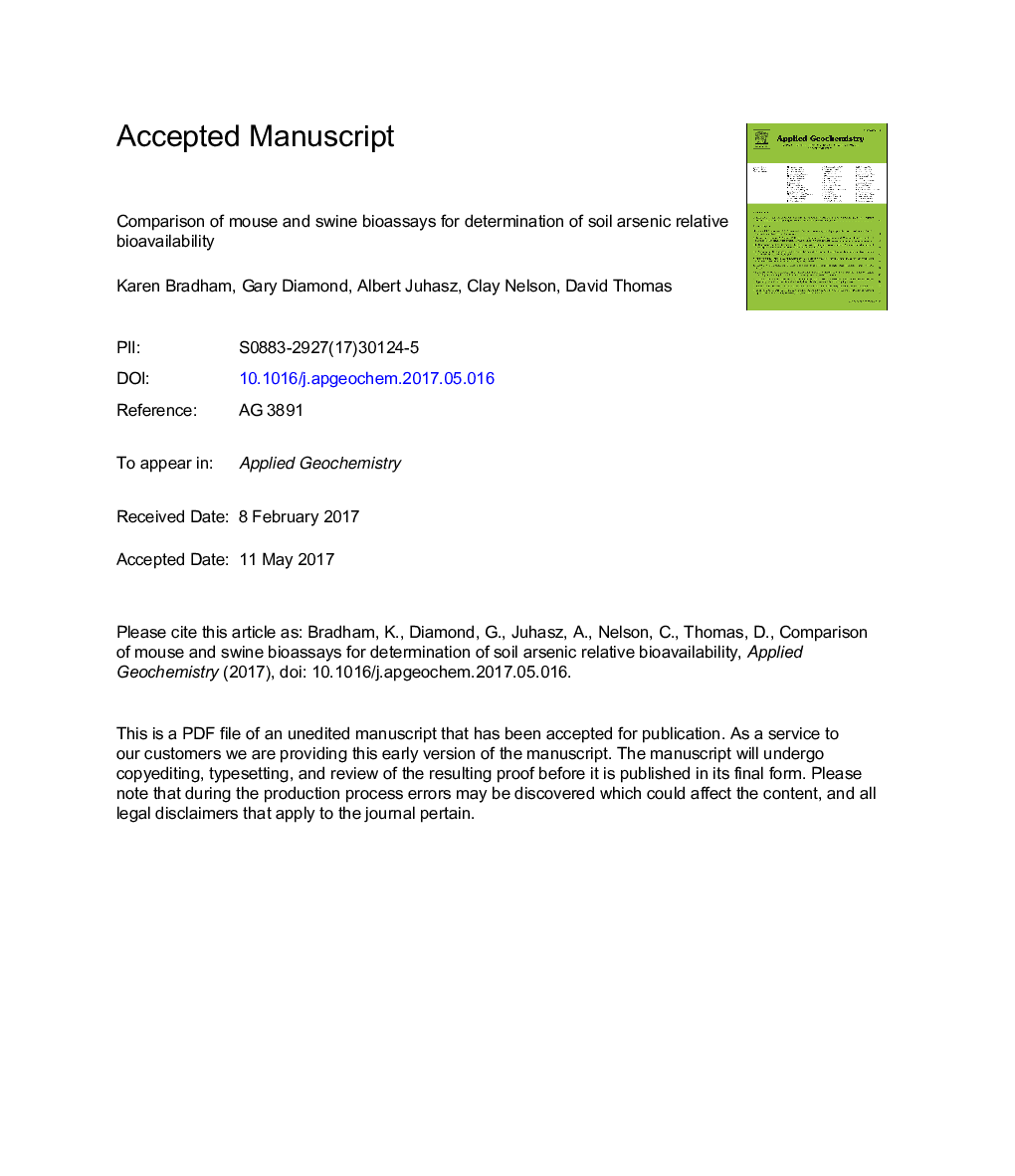| کد مقاله | کد نشریه | سال انتشار | مقاله انگلیسی | نسخه تمام متن |
|---|---|---|---|---|
| 8863228 | 1620203 | 2018 | 16 صفحه PDF | دانلود رایگان |
عنوان انگلیسی مقاله ISI
Comparison of mouse and swine bioassays for determination of soil arsenic relative bioavailability
ترجمه فارسی عنوان
مقایسه روشهای بیولوژیکی ماوس و سویه برای تعیین میزان جذب زیستی نسبی آرسنیک
دانلود مقاله + سفارش ترجمه
دانلود مقاله ISI انگلیسی
رایگان برای ایرانیان
موضوعات مرتبط
مهندسی و علوم پایه
علوم زمین و سیارات
ژئوشیمی و پترولوژی
چکیده انگلیسی
Evaluation of soil arsenic (As) relative bioavailability (RBA) is essential to accurately assess human exposure to As contaminated soils via the incidental ingestion pathway. A variety of animal bioassays have been developed to estimate As RBA in contaminated soils and dusts, with uncertainty regarding how physiological differences between animal models or differences in assay methodologies may influence As RBA estimates. This study compared As RBA estimates across 20 As pesticide and mine-impacted soils in two commonly utilized animal bioassays, a mouse model based on steady state urinary excretion factor (UEF) and two swine models based on UEF and area under the curve (AUC), to elucidate factors influencing As RBA estimates. Multiple regression analysis supported combining the RBAs from swine UEF and swine AUC assays into a single regression model. The weighted least squares regression model derived from these data was as follows: swine RBA (%) = 1.23·mouse RBA (%) - 0.80 (R2 = 0.50). The mean relative percent difference between swine and mouse RBAs was +13%. This study extends and confirms conclusions from previous smaller studies to indicate that mouse and swine As RBA assays yield similar RBA estimates when applied to the same soils, although there appears to be a trend for the swine assay to predict higher RBAs than the mouse UEF assay.
ناشر
Database: Elsevier - ScienceDirect (ساینس دایرکت)
Journal: Applied Geochemistry - Volume 88, Part B, January 2018, Pages 221-225
Journal: Applied Geochemistry - Volume 88, Part B, January 2018, Pages 221-225
نویسندگان
Karen Bradham, Gary Diamond, Albert Juhasz, Clay Nelson, David Thomas,
